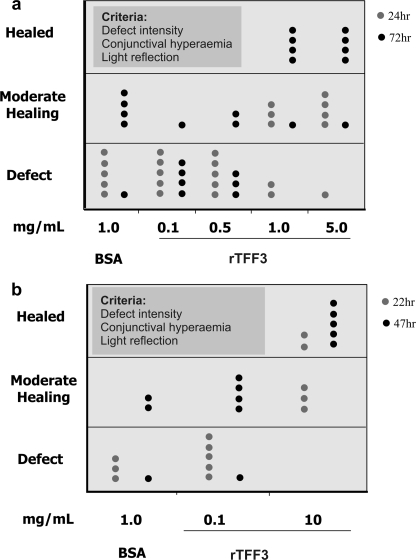FIGURE 3.
rTFF3 accelerates dose-dependent healing of alkali- and laser-induced corneal defects in vivo. In each treatment group five corneas (one dot represents one cornea) were wounded by alkali solution (a) and laser ablation (b) and allowed to heal in vivo. After 24 h (gray dot) and 72 h (black dot) of treatment with 1.0 mg/ml BSA and 0.1, 0.5, 1.0, and 5.0 mg/ml rTFF3 of the alkali-induced wounds (a) and after 22 h (gray dot) and 47 h (black dot) of treatment with 1.0 BSA and 0.1 and 10 mg/ml rTFF3 of the laser-induced wounds (b), corneas were evaluated for defect intensity (wound depth and extent), conjunctival hyperemia (sign for inflammation), and light reflection (sign for the opacity and smoothness of the cornea) and grouped under three broad categories (see “Experimental Procedures”): Healed, Moderate healing, and Defect. These diagrams demonstrate that the effect of rTFF3 on the date of healing is concentration-dependent.

